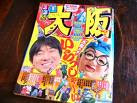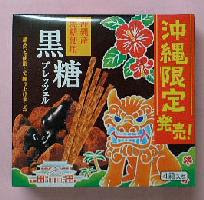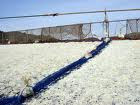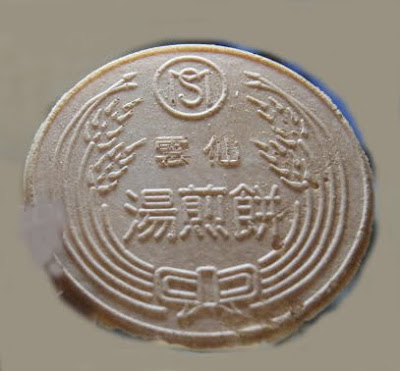::::::::::::::::::::::::::::::::::::::::::::::::::::::::::::::::::::::::::::::::::::::::::::::::::::
Shizuoka Prefecture
Shizuoka Prefecture (静岡県,Shizuoka-ken) is a prefecture of Japan located in the Chūbu region on Honshū island. The capital is the city of Shizuoka.
The prefecture was previously divided into Tōtōmi Province, Suruga Province and Izu Province. The most noted history of the prefecture is that it was once home to the first Tokugawa Shogun.
The region was held by Tokugawa Ieyasu until he conquered the lands of the Hōjō clan in the Kantō region and gave his lands to the stewardship of Oda Nobunaga. After becoming shogun Tokugawa took the land back for his family, particularly putting the area around modern-day Shizuoka city under direct shogunal supervision.
It once again became the residence of the Tokugawa family after 1868, with the creation of Shizuoka han.
Shizuoka Prefecture is an elongated region following the coast of the Pacific Ocean at the Suruga Bay. In the west, the prefecture extends deep into the Japan Alps, while farther east it becomes a narrower coast bounded on the north by Mount Fuji, until it comes to the Izu Peninsula, a popular resort area pointing south into the Pacific
© More in the WIKIPEDIA !
Mount Fuji 富士山 Fujisan Fujiyama
Temple Shuzen-Ji 修善寺 with onsen hot spring
. . . CLICK here for Photos !
A personal BLOG
source : Shizuoka Gourmet
:::::::::::::::::::::::::::::::::::::::::::::::::::::::::::::::::::::::::::::::::::::::::::::::::::
Local Dishes from Shizuoka 静岡郷土料理
. . . CLICK here for Photos !
asa raamen 朝ラーメン ramen for breakfast
In Fujieda town 藤枝.
The people from the nearby port of Yaizu 焼津市 and the tea pickers used to get up early for work. So the noodle shops followed suit with a soup based on soysauce flavor with little fat. Some now even serve a set of one bowl of hot soup and one bowl of cold soup. The shops start as early as 5 in the morning and close for lunch.
. . . CLICK here for Photos !
ashitaba no goma ae あした葉の胡麻和え ashitaba leaves with sesame dressing
Ashitaba-Pflanze. Angelica keiskei
awabi no odoriyaki あわびの踊り焼 "dancing awabi"
awabi grilled alive
ayu no kanroni 鮎の甘露煮
sweetly simmered ayu fish, especially with eggs
ayu no senbei 鮎のせんべい
deep-fried pieces of ayu fish
Benten Nabe 弁天鍋
"Seafood Hodgepodge from Benten Island", with miso soup and iseebi lobster, crabs and special abalones,
From Matsuzaki.
tokobushi 床伏、 Japanese abalone、Sulculus diversicolor aquatilis
Heda no shio 戸田の塩 Salt from Heda, Izu peninsula
Hamamtasu gyooza, Hamamatsu gyoza 浜松餃子
There are a lot of boiled moyashi soybean sprouts in the middle of the gyoza dish. Served with hot chili oil, raayuu ラー油
. . . CLICK here for Photos !
いのしし鍋・きじ鍋 inoshishi nabe, kiji nabe
hodgepodge with wild boar or pheasant
iruka no misoni いるかの味噌煮
iruka dolphin meat in small pieces
iseebi no sugatazukuri 伊勢海老の姿造り
Lobster sashimi served on the living animal
iwashi no kezuribushi 蒲原いわし削りぶし
shredded dried sardines
From Kanbara town かんばら【蒲原】
. . . CLICK here for Photos !
The dried sardines are once more dipped in a special flavored mix and dried again before shredding in special maschines. They can be used for dashi broth and many other dishes.
They are a speciality of the town and are put on many dishes, even on curry (which is also cooked with loads of these shreds, when there is not enough meat.
Kanbara iwashi karee 蒲原いわしカレー curry with sardines
Kaguyahime chazuke 富士かぐや姫茶漬け bowl of rice with tea
Fuji Town 富士市
kibinago no sashimi きびなごの刺身
sashimi from small sardines. from Matsuzaki Town. They live in the cliffs from December to April and can be caught, before they take off to Kagoshima.
kuromai mochi 黒米餅 mochi made from "black rice"
from Shuzen-Ji Hot Spring 修善寺温泉
They are eaten with soy sauce.
. . . CLICK here for Photos !
There is also a kind of ricewine from this special Shuzenji black rice: Kuromai Yondai Shikomi Seishu
magochazuke まご茶づけ, Magocha
MAGOCHA ... from Chiba
mugitoro 麦とろ creamy wheat and jam sauce for topping
Numazu Station Ekiben lunchbox
Minato Ajizushi 港あじ鮨mackerel sushi with extra wasabi
oden おでん Oden
quote
Shizuoka oden is a variation of oden, a stew-like Japanese food consisting of fish paste cakes, boiled eggs, daikon, potatoes, kelp rolls, konnyaku, and other ingredients that are first boiled then kept simmering in a broth until consumption.
Shizuoka oden differs from other types of oden in two ways: the preparation of the broth and the way every ingredient is skewered on a stick. The broth is made with beef sinew (instead of the dried skipjack flakes used in other types of oden) and seasoned with strong soy sauce. Because the simmering broth is only replenished rather than discarded, it takes on a very deep, brown-black color; but this process of adding new broth to old is what gives Shizuoka oden the distinctive flavor that many people find so delicious.
© More in the WIKIPEDIA !
- - - - - Shizuoka Oden - 5 details
black hanpen 黒はんぺん
black broth 黒いスープ
stuck on some special kushi串
sprinkeld with aonori 青海苔 and dashikona だし粉
often served at a store for dagashi sweets 駄菓子屋.

There is a food street near the station of Shizuoka,
Oden is the "soul food" of the people here.
Oden Yokocho 静岡 おでん横丁
. Oden, O-Den hodgepodge おでん 御田 .
omoro オモロ with vinegar-miso or boiled in soy sauce or with curry sauce.
same as tebichi in Okinawa: tonsoku 豚足(とんそく)
:::::::::::::::::::::::::::::::::::::::::::::::::::::::::::::::::::::::::::::::::::::::::::::::::::::
sakuraboo さくら棒 "cherry blossom stick"
Sakurabo.
Made from FU wheat gluten and food coloring, a sweet. It also comes in different colors (flavors), like green powder tea. Some are as long as 60 centimeters.
CLICK here for PHOTOS !
sakura-ebi no kakiage 桜えびのかき揚げ
Kakiage-Tempura from sakura shrimp
. . . CLICK here for Photos !
Made from fresh shrimp and leafs of leek, cut finely.
geschnitzeltes Tempura mit Sakura-Garnelen
Dishes with Sakura-ebi 桜えび料理
sakura gohan さくらご飯 "cherry blossom rice"
rice cooked with soy sauce and sake only, no other ingredients.
CLICK here for PHOTOS !
From the Western Parts of Shizuoka. Today it is eaten at homes and schools and kids like this simple dish.
Probably it started much earlier, when the fishermen and farmers offered for the Ebisu deity not only their catch and farm products, but a bowl of this simple rice.
sakura ha mochi さくら葉餅
Mochi wrapped in cherry leaves
From the town of Matsuzaki 松崎町, since Showa 6.
:::::::::::::::::::::::::::::::::::::::::::::::::::::::::::::::::::::::::::::::::::::::::::::::::::::
shirasu tatami しらすタタミ
small white fish dried "like a tatami mat"
.................................................................................
Shizuoka cha 静岡茶 tea from Shizuoka
The growing of tea started at the early Meiji-Period, when the statesman Katsu Kaishu (1823-1899) had to take care of the livelihood of the vasalls from the last Tokugawa shogun. He suggested they come to Shizuoka, where the Shogun Yoshinobu had taken up residence in exile, and start planting tea, since green tea was in demand with the many foreigners coming to Japan via Yokohama. The retainers came to Makinohara 牧之原台地 to start the tea plantages.
- - - Count Katsu Kaishū 勝海舟
. Katsu Kaishu in Akasaka Tamachi, Tokyo .
Reference ... Tea from Shizuoka

Shizuoka koora 静岡コーラ Cola from Shizuoka (with green tea)
The Kimura Drinks Co.,Ltd. have been producing a variety of drinks since their foundation in 1947. A local business that is still stationed in the Shizuoka Prefecture (between Nagoya and Tokyo), they have survived and thrived by not competing with the big boys like Asahi and Kirin, but but by producing small quantities of locally made drinks.
- snip - Although the drink draws in the tourists, Kimura Drink is not resting in its quest to make the most unique drinks available. Besides Shizuoka Cola, you can buy Shizuoka, Strawberry and Fuji Cider (as in lemonade, not fermented apples).
- - source axio mmagazine -
.................................................................................
suppon ryoori スッポン料理
Speciality of Hamamatsu. 70% of Japanese suppon is farmed here.
suppon turtle, Pelodiscus sinensis
takaashigani taka-ashi kani たかあしがに (高足蟹)
crabs with long legs. Japanese Spider Crab.
Macrocheira kaempferi . giant spider crab
fished in the deap sea off Heda, Izu peninsula, in Suruga Bay.
. . . CLICK here for Photos !
„Japanische Spinnen-Krabbe“.
torobotchi, torobocchi とろぼっち fish
fished in the deap sea off Heda, Izu peninsula.
shinkaigyo 深海魚 fish from the deep sea, more than 200 meters desp
also called
aome eso アオメエソ 青眼狗母魚
The body is long and round, about 15 cm. Big eyes, which reflect the sunlight, so it is also called "sparkling eyes" (mehikari メヒカリ). His white meat is used for sashimi, kara-age and shioyaki fried with salt.
. . . CLICK here for Photos !
tororojiru とろろ汁 soup with grated tororo yam
At the station Mariko 丸子の宿 (鞠子) of the old Tokaido. For example from 梅若菜丸子の宿
. . . CLICK here for Photos !
unagi no kabayaki うなぎの蒲焼き broiled eel
aquafarming has started here since the Meiji restauration around lake Hamanako 浜名湖.
わさび漬け wasbizuke, wasabi pickles
spring kigo
*****************************
Related words
***** WASHOKU : Regional Japanese Dishes
***** . Folk Toys from Shizuoka .
:::::::::::::::::::::::::::::::::::::::::::::::::::::::::::::::::::::::::::::::::::::::::::::::::::::::::::::::::::::::::::
[ . BACK to DARUMA MUSEUM TOP . ]
[ . BACK to WORLDKIGO . TOP . ]
:::::::::::::::::::::::::::::::::::::::::::::::::::::::::::::::::::::::::::::::::::::::::::::::::::::::::::::::::::::::::::
























